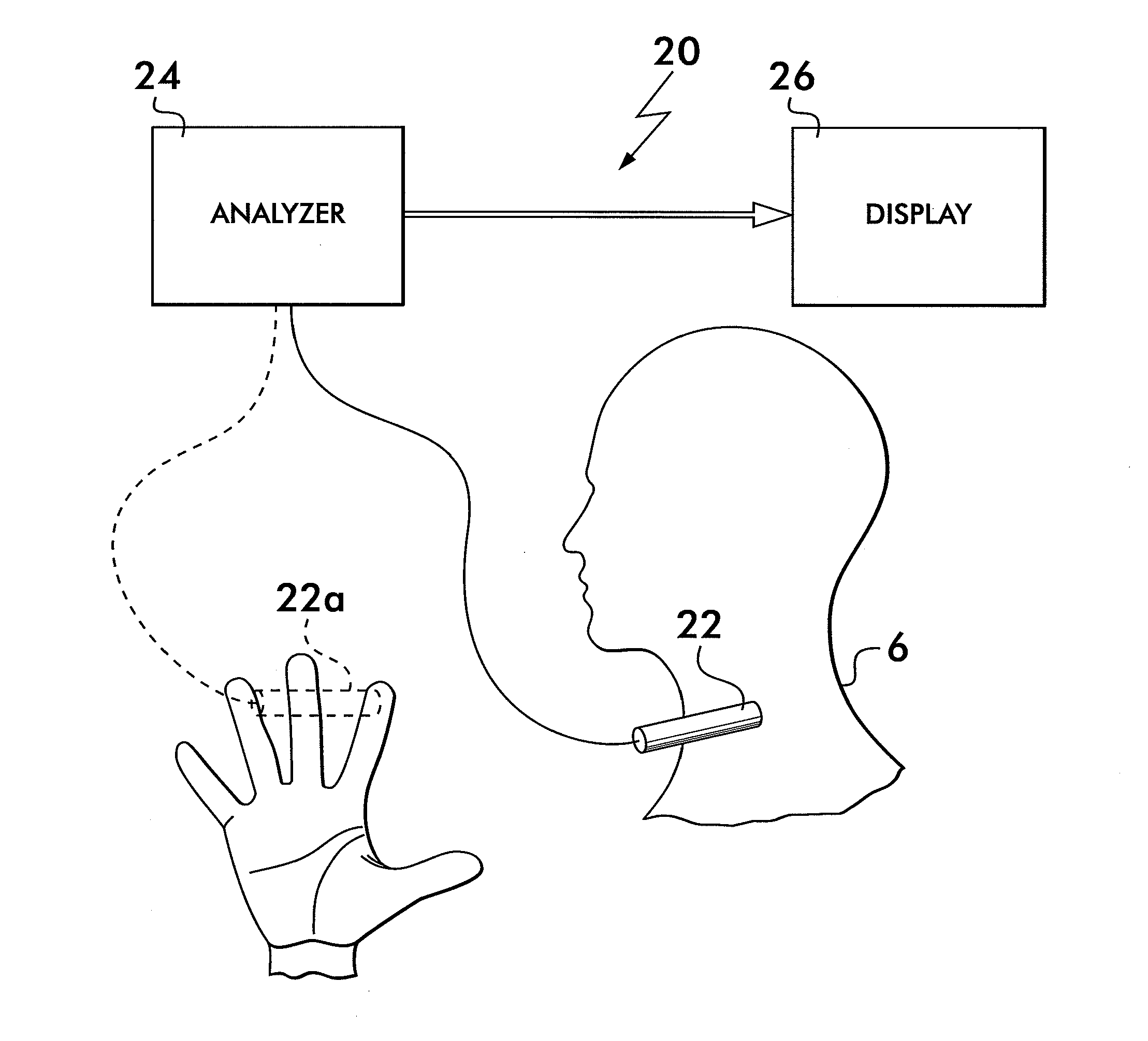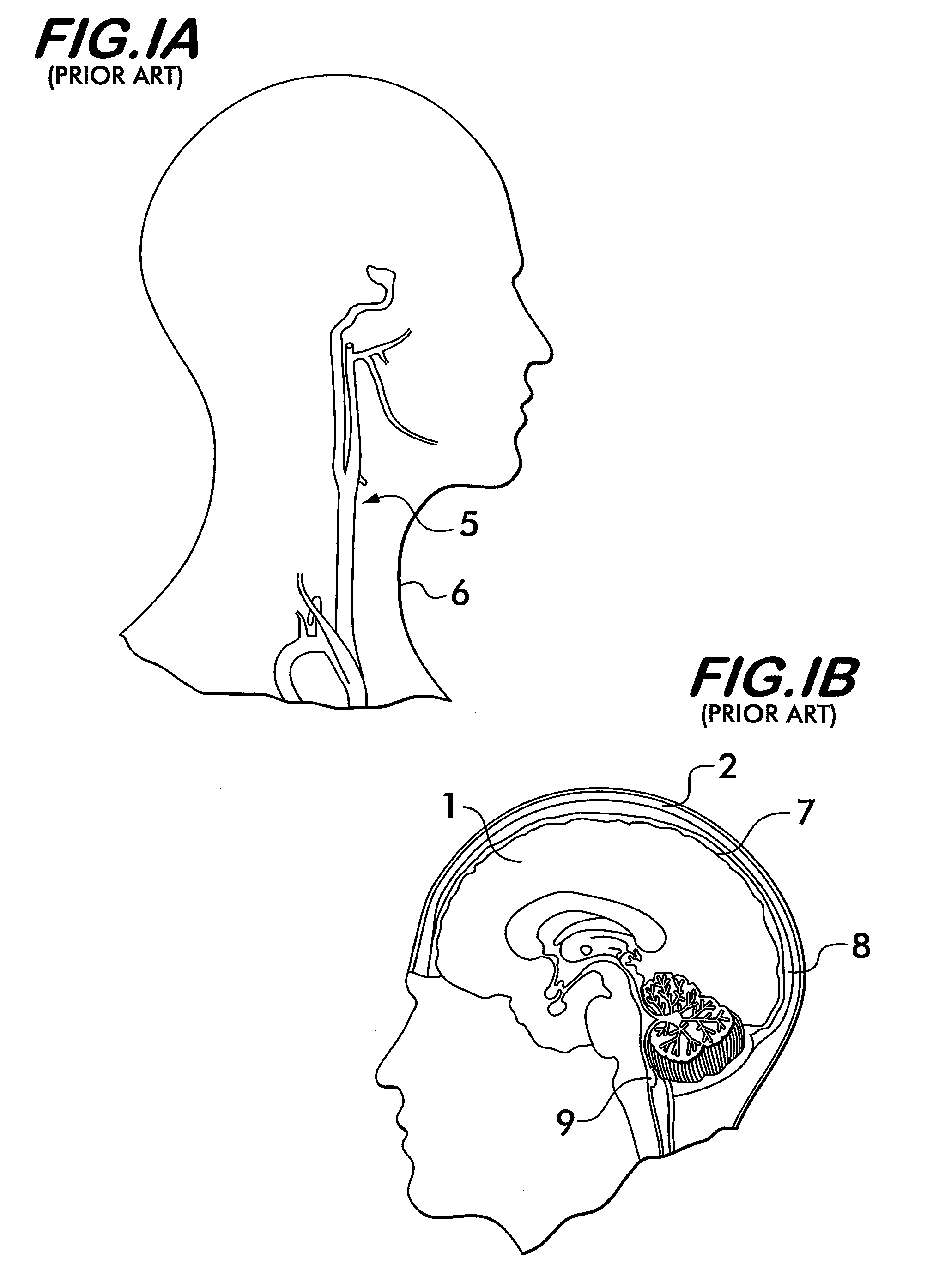Non-invasive intracranial pressure sensor
a sensor and intracranial pressure technology, applied in the field of medical devices, can solve the problems of inconvenient use, inconvenient measurement, and inconvenient operation, and achieve the effects of reducing the accuracy of the measurement, and reducing the risk of surgery
- Summary
- Abstract
- Description
- Claims
- Application Information
AI Technical Summary
Benefits of technology
Problems solved by technology
Method used
Image
Examples
Embodiment Construction
[0031]The present invention 20 is a non-invasive, hand-held device for measuring intracranial pressure (ICP). FIG. 2A depicts a block diagram of the system 20 which comprises a primary sensor 22, an analyzer 24 and an output device 26 (e.g., a monitor) for displaying the ICP and associated data. A reference sensor 22a (as will be discussed in detail later) may also be used but is not required. FIGS. 2B and 2C provide a flow diagram of the method 100 of the present invention.
[0032]The invention 20 derives ICP from quantitative analysis of the pulse pressure waveform in the arteries supplying blood to the brain and preferably also based upon reference arteries (e.g., artery in the index finger). As explained previously, blood reaches the brain (mainly) via branches of the common carotid arteries 5 (see FIG. 1A). The carotid pressure wave is partly reflected upon striking the smaller diameter (and higher hydraulic impedance) cerebral vascular bed and this reflection contributes to the ...
PUM
 Login to View More
Login to View More Abstract
Description
Claims
Application Information
 Login to View More
Login to View More - R&D
- Intellectual Property
- Life Sciences
- Materials
- Tech Scout
- Unparalleled Data Quality
- Higher Quality Content
- 60% Fewer Hallucinations
Browse by: Latest US Patents, China's latest patents, Technical Efficacy Thesaurus, Application Domain, Technology Topic, Popular Technical Reports.
© 2025 PatSnap. All rights reserved.Legal|Privacy policy|Modern Slavery Act Transparency Statement|Sitemap|About US| Contact US: help@patsnap.com



